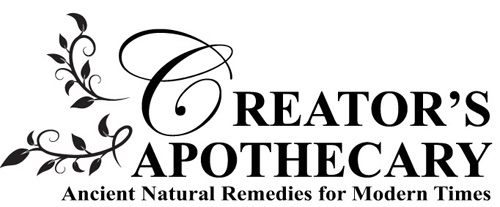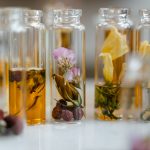Oils Listed in the Bible
The following list includes essential oils that are referenced in the Bible. These statements have not been evaluated by the Food and Drug Administration. These oils are not intended to diagnose, treat, cure or prevent any disease.
Essential Oil General Safety Information: Essential Oils (EOs) are highly concentrated extractions of plants and can be harmful if not used carefully. Incorporating EOs into your lifestyle should not cause unnecessary work, but it is important to heed all safety precautions. Never take EOs internally, even if a label say it is safe for consumption by mouth. Never put undiluted EOs directly onto your skin (NEAT) to avoid sensitization of skin, and never apply NEAT to broken skin. Some EOs can cause irritation, sensitization or allergic reactions in some individuals. When using a new oil topically for the first time, perform a skin patch test on a small area of the skin. Some EOs are phototoxic and can cause irritation, inflammation, blistering, redness and/or burning when exposed to UVA rays of the sun. Discontinue using EOs immediately if you encounter any irritation, redness or reaction. Take care when adding EOs directly to bathwater. EOs do not stayed mixed in water, and can, therefore “pool” causing the EO to touch body areas in full strength with the potential for irritation. Some EOs should be avoided during pregnancy or by those with asthma, epilepsy, or other health conditions. Avoid using EOs near the genitals, mouth, nose, eyes and ears. Extreme caution should be used with children and elderly (due to medication mix). Care should be taken when using EOs near animals as not all EOs are safe to use on dogs, cats, birds, horses or other pets. EOs are flammable; keep them away from fire hazards.
Oils Listed in the Bible
- Aloes aka Sandalwood (Santalum album)
- Anise (Pimpinella anisum)
- Balm (Balsam) of Gilead (Commiphora opobalsamum, Populus balsamifera)
- Bay aka Bay laurel (Laurus nobilis)
- Bdellium (Commiphora wightii, Commiphora Africana, guggul)
- Calamus (Acorus calamus – Calamus—also known as sweet flag)
- Camphire aka Henna (Lawsonia inermis)
- Cassia (Cinnamomum cassia)
- Cedar aka Cedarwood (Cedrus libani, Cedrus atlantica)
- Cinnamon (Cinnamomum verum)
- Coriander (Coriandrum sativum)
- Cumin (Cuminum cyminum)
- Cypress Cupressus sempervirens)
- Fir (Abies balsamea)
- Frankincense (Boswellia sacra, B. frereana, B. papyrifera, B. serrata)
- Galbanum (Ferula gummosa, F. galbaniflua)
- Hyssop (Hyssopus officinalis)
- Juniper (Juniperus communis)
- (Spearmint) Mint (Mentha spicata, Mentha longifolia)
- Mustard seed (Brassica nigra, B. juncea)
- Myrrh (Commiphora myrrha)
- Myrtle (Myrtus communis)
- Onycha aka Benzoin (Styrax benzoin)
- Pine (Pinus)
- Rose of Sharon aka Cistus/Rock rose (Cistus ladaniferus, Cistus ladanifer)
- Rue (Ruta graveolens)
- Saffron (Crocus sativus)
- Shittah aka Acacia, Gum arabic (Acacia farnesiana)
- Spikenard (Nardostachys jatamansi)
- Wormwood (Artemisia herba-alba)
Grace to you and peace from God our Father and the Lord Jesus Christ. Philippians 1:2
Til next time,





